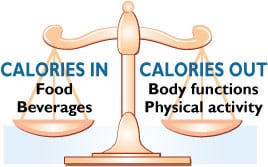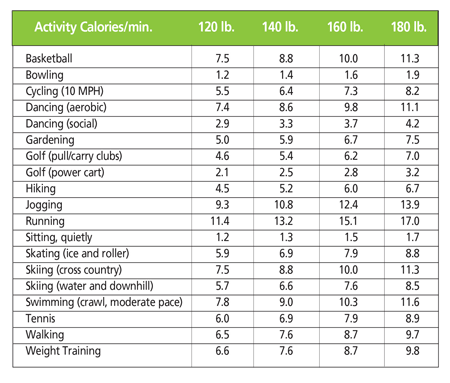Judging from the ever rising overweight/obesity rates in the United States, I think it's safe to assume that a majority of Americans subscribe to the work out less plan. I find it a bit alarming when scientific data is released and the news takes a portion of a study's findings out of context and reports on it. Typically we can end up misguided and confused. That's why it's so important to understand the bigger picture surrounding "sound bites" like this post's title. This reminds me of a radio ad that would, ironically, air while I was training at the gym. The advertisement was pushing a diet pill which promised weight loss without the "unhealthy stress and strain of exercise"! I'll spare you a rant, but I will say that the ad was eventually changed so that it did not include the word unhealthy. Calling exercise unhealthy is blatantly inaccurate. Yet, unfortunately this isn't obvious to everyone. But I digress...
What's going on? -
Saying that we can increase weight loss by working out less is ambiguous because this statement tells only part of the story. So, before you scratch that workout off your to-do list, please read on. According to a study published in the American College of Sports Medicine's (ACSM) Journal of Medical Science and Sports Exercise, it's possible to burn more calories and spend less time working out. However, the key to this result lies in how intensely you workout. Before I go on, it might be helpful to recall the caloric balance equation and its role in weight maintenance, and you can read more about this in a past post found here.
 |
| Image from CDC website |
Back to the study - The researchers wanted to see what the energy expenditure at rest of males, aged 22 to 33, would be on a day when they performed a vigorous indoor cycling exercise bout vs. on "a controlled resting day" when they performed no exercise at all. I underlined and bold faced the word vigorous because this is very important to note. In this case vigorous exercise is defined as performing a physical activity at a level that causes you to be too out of breath to talk. Working out at this intensity level "resulted in a significant [emphasis added] elevation in post exercise energy expenditure, that persisted for 14 hours" after the exercise bout ended (ACSM).
Wow! This sheds some much needed light on that rather ambiguous statement that implies we can increase weight loss by working out less. Now we understand that it's possible to decrease the amount of time we spend working out, but this must be accompanied by an increase in the intensity of our workout to a vigorous level. This is because the research suggests that we can burn additional calories above and beyond what we burned during the workout, even while we're at rest! This is sometimes referred to as caloric after burn.
Here's the data: During the vigorous cycling bout these guys expended 520 calories (kcal). This isn't surprising because we all know exercise expends calories. We also know that vigorous exercise burns more calories than low and moderate intensity exercise. However, what is really exciting is that after the men finished exercising, and with their post exercise activity level restricted and monitored, they continued to burn an additional 190 calories (kcal) during the 14 hours after their workout, as compared with control days when the men were inactive. "The 190 calories burned after exercise above resting levels represented an additional 37% to the net energy expended during the 45-min cycling bout."
Bottom Line -
The study's test subjects were young men, so the results may not be the same for women, or for an older population. Also, we might not be able to workout at a vigorous level for 45 minutes. Given this and other studies on vigorous intensity exercise which show the added benefit of caloric after burn, it seems beneficial to try to incorporate little bouts of vigorous intensity exercise in our workouts. But if you've never exercised, or haven't worked out in years - BEGIN SLOWLY and always consult your physician before beginning any exercise program. Obviously any exercise is better than none, but I like the idea of putting in a little more effort, giving it a little less time and reaping bigger rewards from my workout. It seems like a win/win to me and that's no sound bite.
In the next post there will be some suggestions for vigorous intensity bout exercise programs and also a discussion relating to another study that shows bouts of vigorous intensity exercise have been shown to be beneficial in reducing inflammation in overweight and obese men. Chronic inflammation is linked to all kinds of health problems.
In the meantime, keep moving!
Sources
CDC - http://www.cdc.gov/obesity/data/trends.html
ACSM - American College of Sports Medicine - http://journals.lww.com/acsm-msse/Abstract/2011/09000/A_45_Minute_Vigorous_Exercise_Bout_Increases.6.aspx
CDC - http://www.cdc.gov/healthyweight/calories/index.html
chronic inflammation - http://www.drweil.com/drw/u/ART02012/anti-inflammatory-diet




